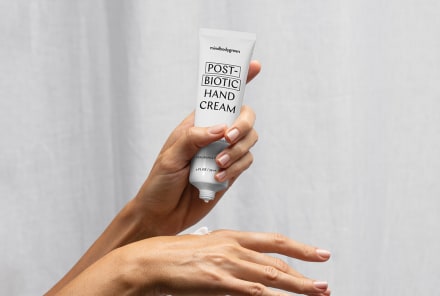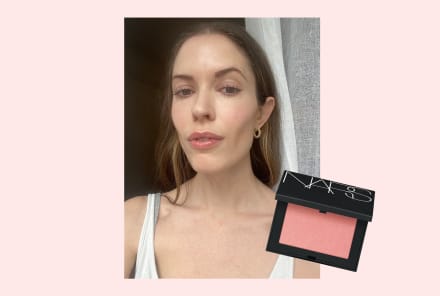Advertisement
Why Houseplant Pots Need To Have Drainage Holes & How To Make Your Own

The No. 1 rule of plant parenting: Don't buy a houseplant just because it's pretty. Always consider its water, humidity, and lighting needs to ensure it stands a chance of surviving in your space. The same rule applies for houseplant pots, too: Choosing one based on aesthetics alone is a no-no. Once one catches your eye, be sure to turn it over and check for the most important functional feature: a drainage hole.
Why do houseplant pots need to have drainage holes?
"You always want to drench your plants on watering day. That's problematic if there's not a hole at the bottom of the pot because then all that water is just sitting in there," Maryah Greene, the founder of Greene Piece, tells mbg. Greene says that this thorough drenching is important since it ensures that water is evenly distributed throughout a plant's roots and soil.
When a plant sits in a pot with a drainage hole, you'll know you've watered it enough when the water starts running through the hole. With no hole, you won't know when your greenery is properly hydrated and you'll run the risk of overwatering—a leading cause of plant death. With nowhere to go, all that water will essentially drown your plant's root system.
"It won't have the same spunk or ability to stand on its own," Greene says of an overwatered plant. Droopy, leathery leaves or brown spots are also signs that a plant is getting too much water.
What if my pot doesn't have a hole?
If one of your pots doesn't have holes, you don't need to toss it out. Here, Greene shares some quick ways to rejigger it so it provides proper drainage:
Drill a hole in it.
A simple fix for those who know their way around the drill, you can add your own hole to the bottom of the pot. You can also do this for other household items you want to turn into pots, such as bowls or mugs, as long as you're confident the material won't shatter.
Add a layer of rocks to the bottom.
"If you have a decorative pot with no hole at the bottom, you can get drainage rocks like lava rocks or pebbles to put at the bottom inch or two of your pot," says Greene. "Completely line it with rocks; this will act as a drainage layer so the roots that get to the bottom of the pot aren't just sitting in excess water."
Put a plastic nursery pot inside it.
Those plastic nursery pots that houseplants come in almost always have holes. While you don't want to keep your plant in there forever (they'll likely outgrow them and need a new home after a while), you can leave them for a few months. Place the plastic pot inside your decorative planter and remove it when it's watering time.
It's not a bad idea to start keeping plastic pots after using them so that you have them on hand when a houseplant needs to be repotted in a larger space. Less to recycle, too!
Watch Next
Enjoy some of our favorite clips from classes
Enjoy some of our favorite clips from classes
What Is Meditation?
Mindfulness/Spirituality | Light Watkins
Box Breathing
Mindfulness/Spirituality | Gwen Dittmar
What Breathwork Can Address
Mindfulness/Spirituality | Gwen Dittmar
The 8 Limbs of Yoga - What is Asana?
Yoga | Caley Alyssa
Two Standing Postures to Open Up Tight Hips
Yoga | Caley Alyssa
How Plants Can Optimize Athletic Performance
Nutrition | Rich Roll
What to Eat Before a Workout
Nutrition | Rich Roll
How Ayurveda Helps Us Navigate Modern Life
Nutrition | Sahara Rose
Messages About Love & Relationships
Love & Relationships | Esther Perel
Love Languages
Love & Relationships | Esther Perel

















